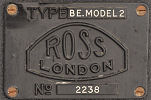|
Episcopes and epidiascopes |
|||
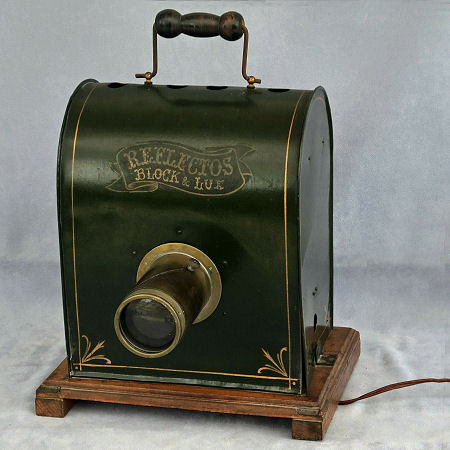 |
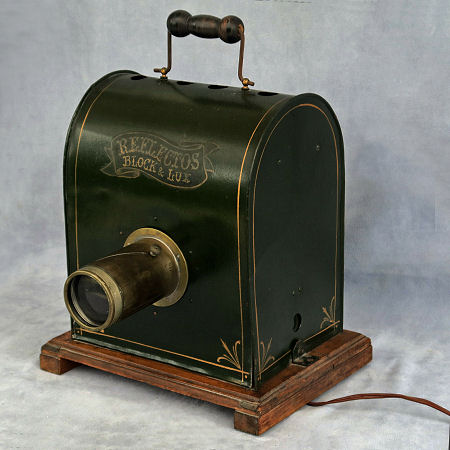 |
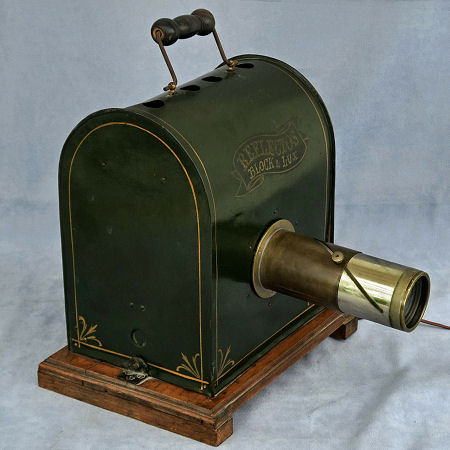 |
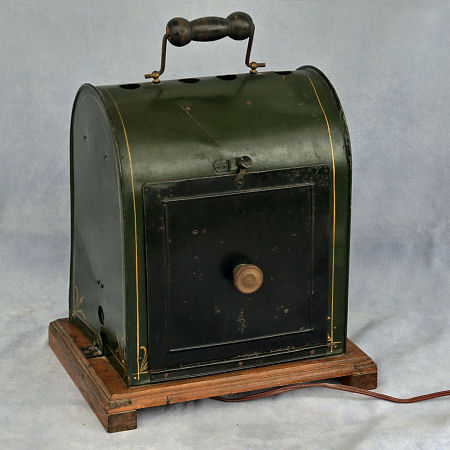 |
|
An episcope or cartoscope for photos and postcards in
the format 9 x 13 cm from an unknown manufacturer. The green lacquered
lamp house features a striking decoration and the inscription 'Reflectos
Block and Lux' in golden lines and letters and has a wooden handle at
the top. Adjustable lens. Dimensions: 25 cm long, 23 cm wide, 34 cm high (incl. handle). |
|
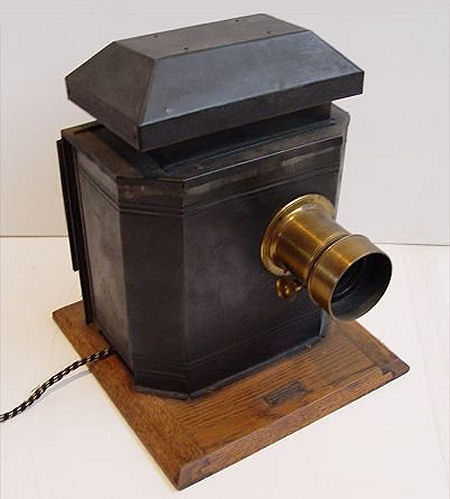 |
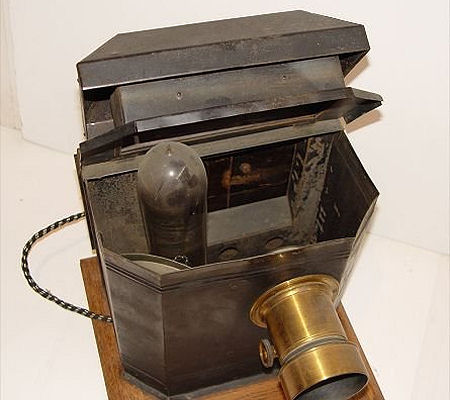 |
|
This episcope is marked
Williams, Brown and Earle Philadelphia PA USA Patented Mar. 28 '05
on plaques on base. Hermages optics. Measures 16'' high x 13'' wide x 15
'' deep to end of optic (40.5 x 33 x 38 cm). | |
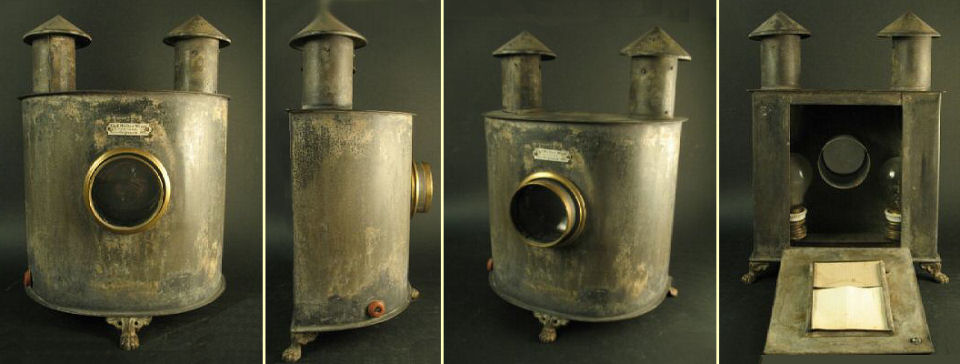 | |
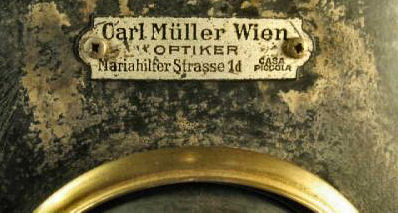 |
Episcope built by the Viennese optician
Carl Müller, around 1880. The image image holder on the back is adjustable for horizontal or vertical postcards and photographs, the lens is 6.6 cm in diameter. The projector was electrified later. Its measures are 36 cm in height, 26 x 15 cm wide and deep. |
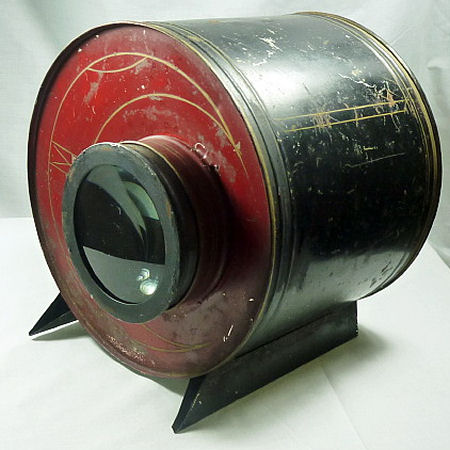 |
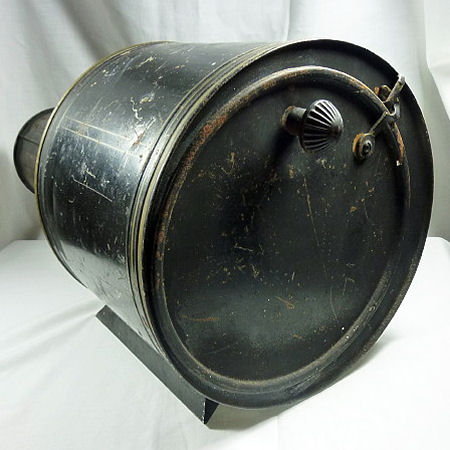 |
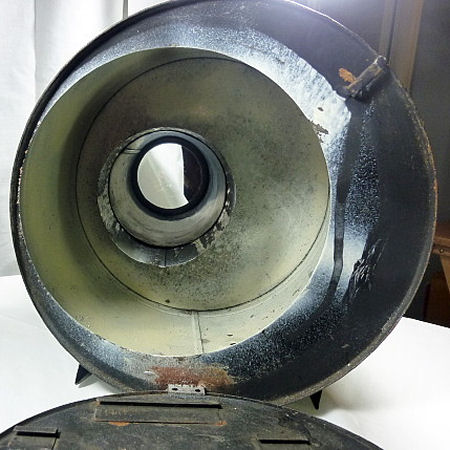 |
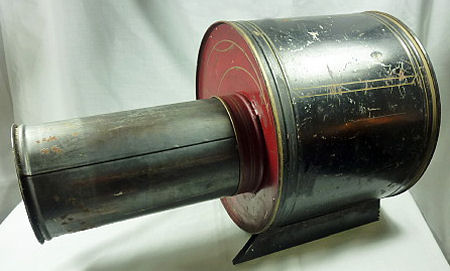 This simple Mirroscope postcard projector was made by The Buckeye Stereoptian Co. of Cleveland, Ohio. It dates from around 1900. From this projector the light source has been removed. The cards fit in slots on the inside of the rear cover. Size is 8" wide x 8 1/2" tall x 8" front to back with the lens pushed in. The lens is 3 3/4'" in diameter. |
|
An early ad read, "THE MIRROSCOPE IS A PROJECTOR ALSO
CALLED AN EPISCOPE OR A MAGIC LANTERN. IT HAS A LIGHT BULB THAT
ILLUMINATES THE OBJECT TO BE PROJECTED AND REFLECTS IT THROUGH THE LENS
ONTO A WALL OR SCREEN. YOU CAN SHOW PHOTOS OR OTHER PAPERS. YOU FOCUS IT
BY MOVING THE LENS TUBE IN AND OUT." | |
|
Fotoscope post card projector made by Stratton
Manufacturing Company New York City in the 1880's. These magic lanterns
were manufactured in various styles, gas, acetylene, oil and electric
light. Rectangular metal box-form on short legs. The body measures just 12" x 12" x 5" deep
(30.5 x 30.5 x 12.5 cm). |
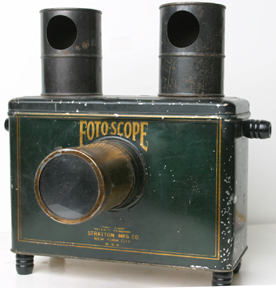 |
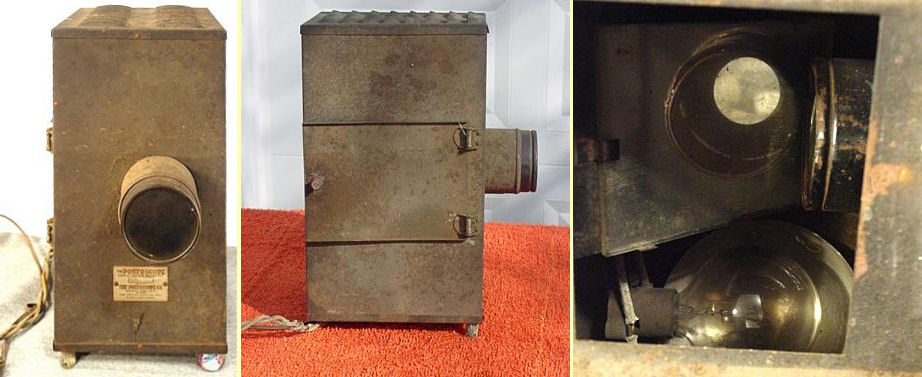 | |
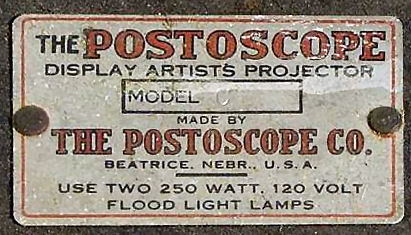 A worn and rusting Postoscope display artist projector Model C, made by The Postoscope Co. that uses two 250 W, 120 V flood light lamps. It has the Manufacturer's Metal tag below the lens. There is a mirror inside for reflecting the image. The door on the side has spring hinges to hold the image firmly at its place. The projector is about 17" tall x 9" wide x 9 3/4" front to back (43 x 23 x 25 cm). |
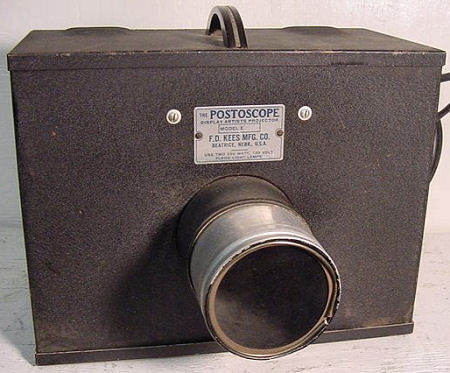 Quite another Postoscope episcope model. Mind that the name of the manufacturer changed to 'F.D. Kees Mfg Co.' |
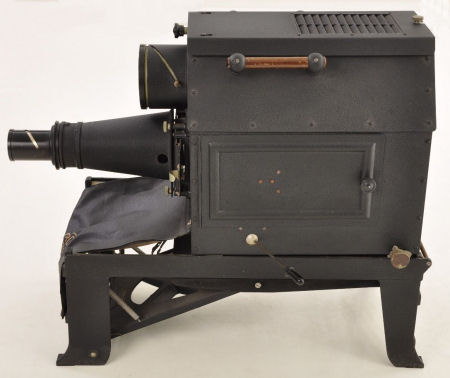 |
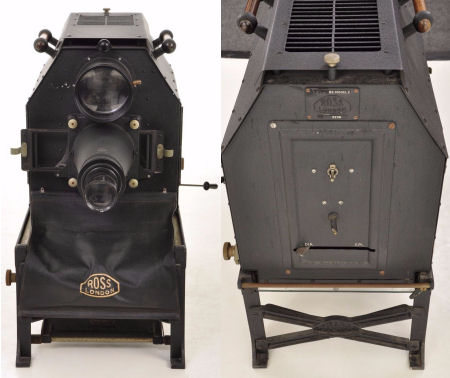 |
|
|
|
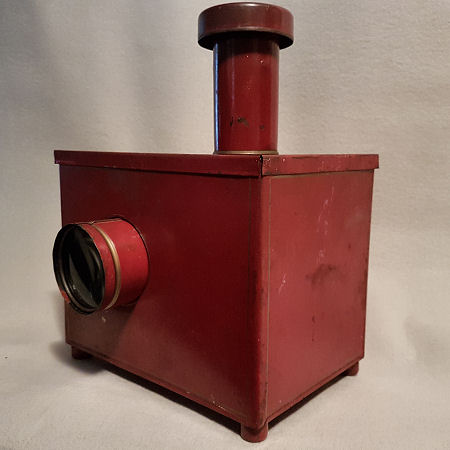 |
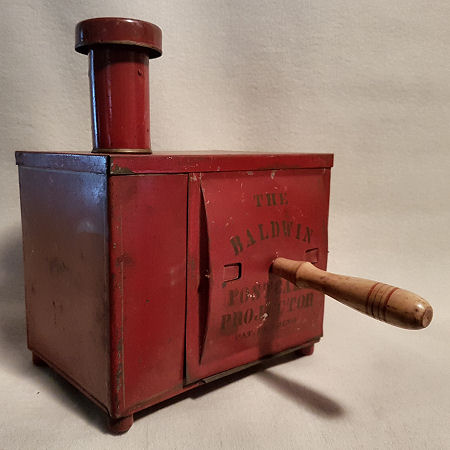 |
| The Baldwin Postcard Projector, made in America. Notice the remarkable handle. | |
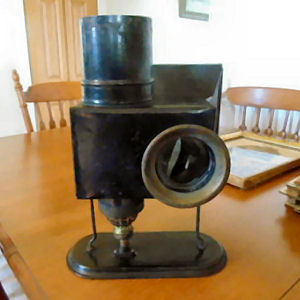 |
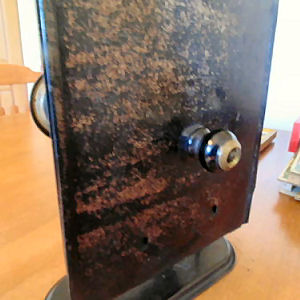 |
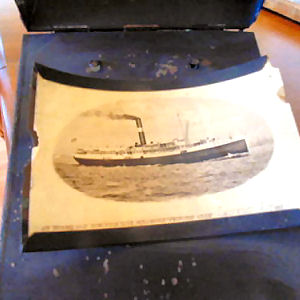 |
|
Rare model of an episcope made by an unknown
manufacturer. A postcard can be placed inside the the hinged back wall. | ||
|
Aphengescope.
Carte-de-Visite episcope c. 1880, especially used for projecting
carte-de-visites, card size 6 x 10 cm. Unmarked brass lens with rack-and-pinion focussing. The episcope itself is sometimes unmarked, sometimes marked by a white shield at the front 'Patent Aphengescope'. The Aphengescope is also known as Mégascope. |
|
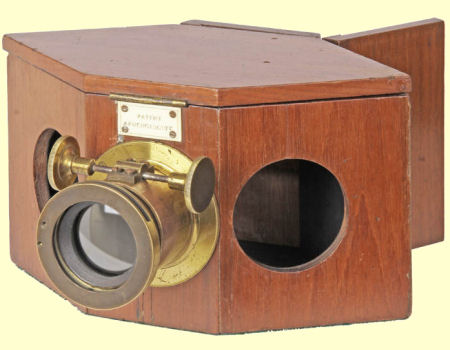 |
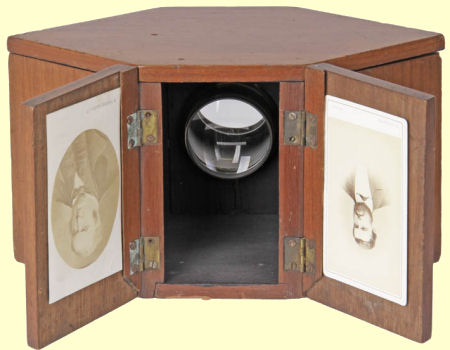 |
|
In 1880/90 Alfred Molteni writes in his book
'Instructions Pratiques sur l’emploi des Appareils de Projection': 'For
the projection of photographic card-de-visites (very popular in the years
1860), it is not necessary to have a special device. We use a small mégascope, known in the trade under the name of 'APHENGOSCOPE' (English
APHENGESCOPE). It consists of a 10 cm square mahogany box that fits on
the front of the first magic lantern from which the objective is removed. The light
is concentrated on photography by the condenser, and the target placed
at
the image on the screen is 45 °. However documents to darker tones
reflect too little light to give bright images on the screen. To illuminate more strongly certain documents, it uses an double APHENGOSCOPE (or room Megascopique) to enjoy the light from two lanterns, through circular openings on each side of the goal. At the rear, two hinged doors, vertical or horizontal depending on the model, are used to project the cartes-de-visites alternatively and continuously. It is with a device of this kind, and with two burners light, together giving a light equivalent to that of 500 candles, we (Alfred Molteni) have projected, in the lessons of Mr. Dr. Bouchut, the coloured boards of his magnificent "Atlas of medical ophthalmoscopy and cerebroscopie" (J.. Baillière and sons, Paris, 1876). |
|
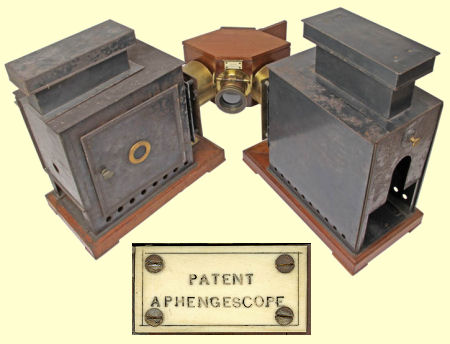 |
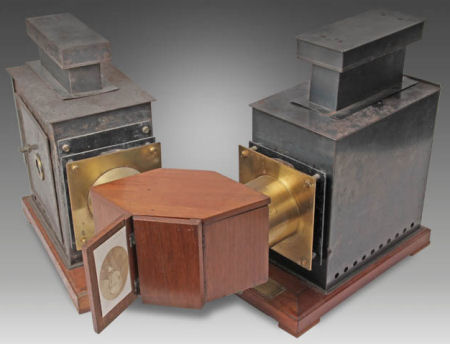 |
| However some do not seem to be of this opinion: "The Lantern and how to use it" by C. GOODWIN NORTON c Hazell, Watson ltd London 1901 Viney: There are several supplements to the ordinary projection lantern that the lanternist is attempting to purchase, usually due to the insistent demonstration of a merchant who has probably never seen the particular device in use. Among these, there are the APHENGESCOPE, an accessory intended to show opaque objects. It is not a practical device, because it is much better and easier to have the opaque object drew or photographed and then project it as a simple transparent view. In this case the light goes through the view and gives the screen a very bright image while with the APHENGESCOPE the light is reflected by the object, and this little light reaches the screen without any brightness. | |
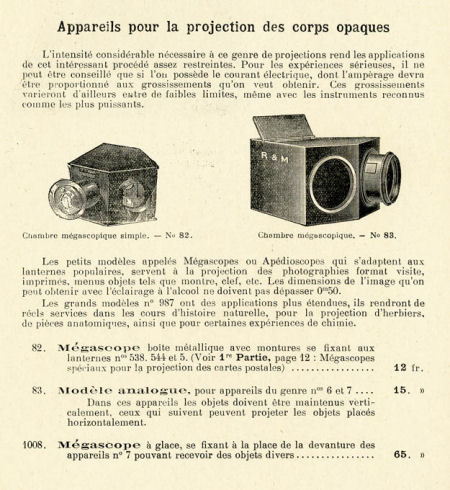 |
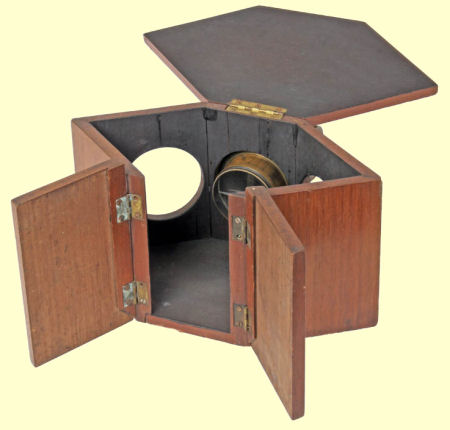 (Left:) Page from the Catalogue No. 89 'Projections Molteni, Radiguet & Massiot'. |
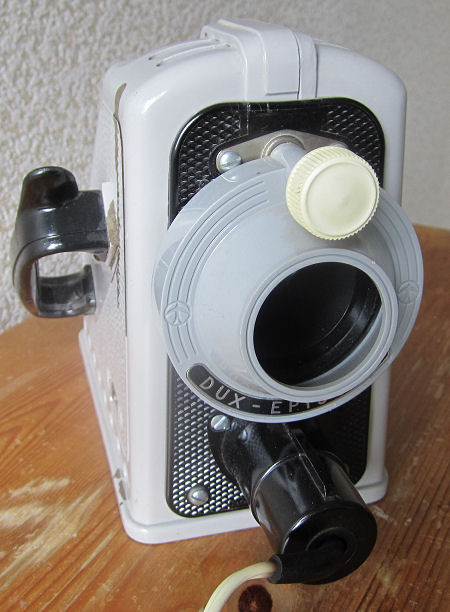 |
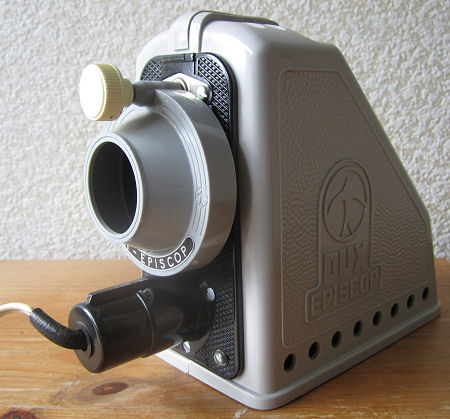 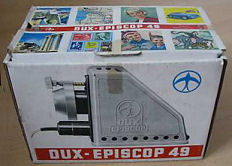 Wide
spread plastic episcope from the 1950s, made by DUX, Germany, intended
to be placed upon a magazine or postcard and for that reason equipped
with a handy handle at one side). Wide
spread plastic episcope from the 1950s, made by DUX, Germany, intended
to be placed upon a magazine or postcard and for that reason equipped
with a handy handle at one side). |
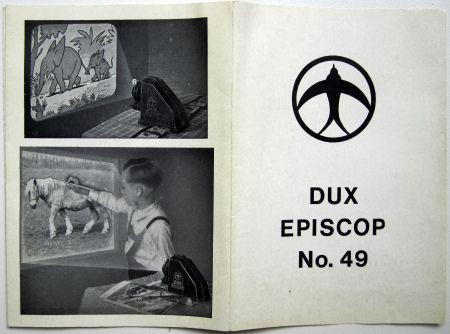 |
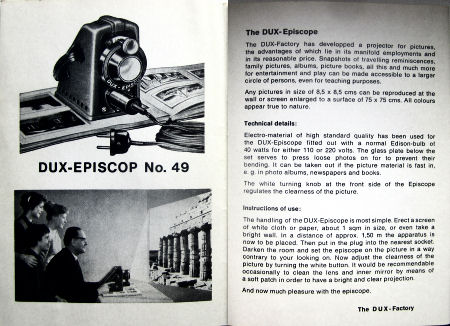 |
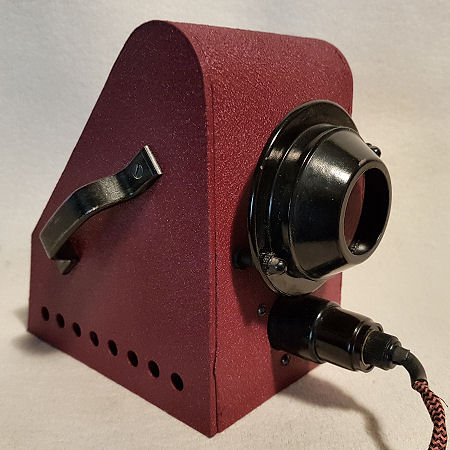 |
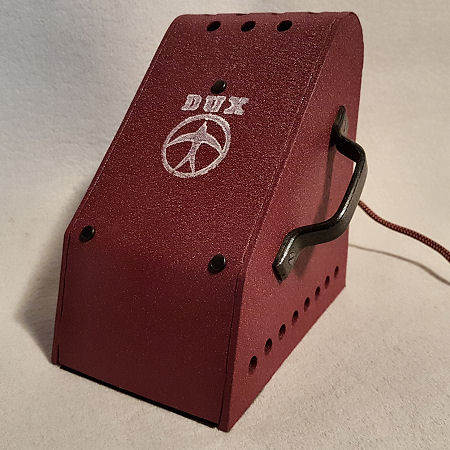 |
|
This simple episcope is also created by Dux. This
time not in the well-known gray plastic design, but made of metal and painted with red hammered lacquer. For focussing the lens
must manually been pushed in and out. Size 195 x 153 x 95 mm. | |
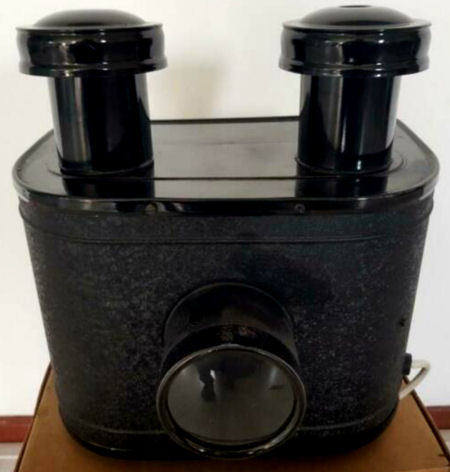 Episcope made by the manufacturer Bing Werke, Nurnberg. The label on the box shows the B.W. trade mark. |
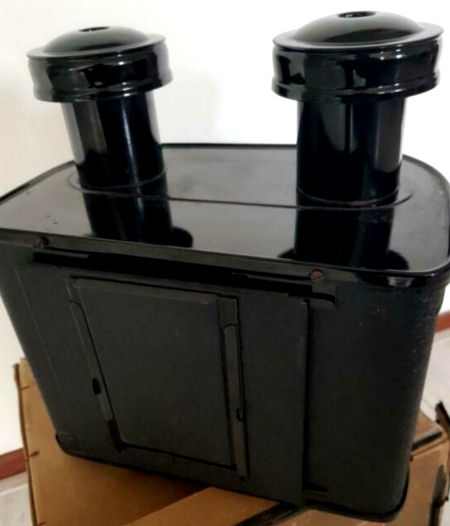 |
ERNEMANN episcope.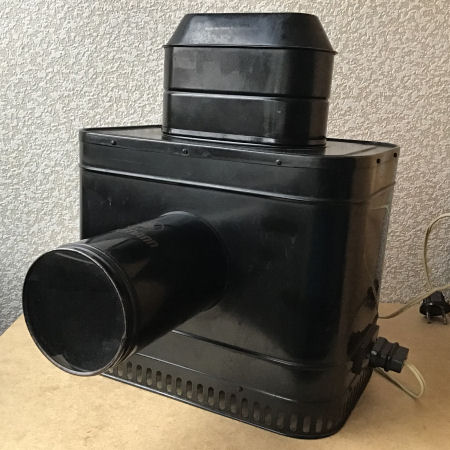 |
Episcope with the trademark and the name of Ernemann on the tube of the
projection lens. The dimensions are: wide 26
cm, high 32.5 cm, and deep 32 cm with retracted projection lens.
This lens can be extended by approx. 14 cm.
In the lamp house two sockets for a light bulb. The back wall can be opened, and closed again with a small latch. In the hinged back wall there is a wooden card holder that can be pushed out of it to enable the card to be changed. 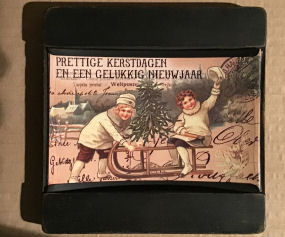 |
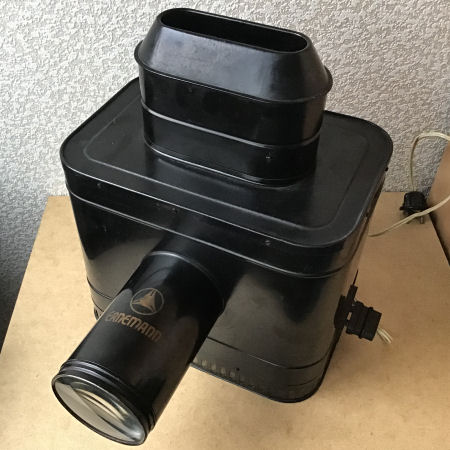 |
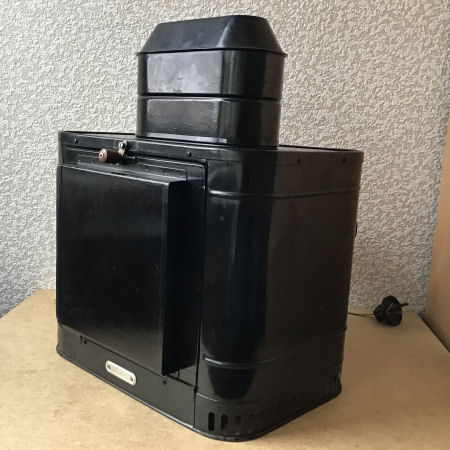 |
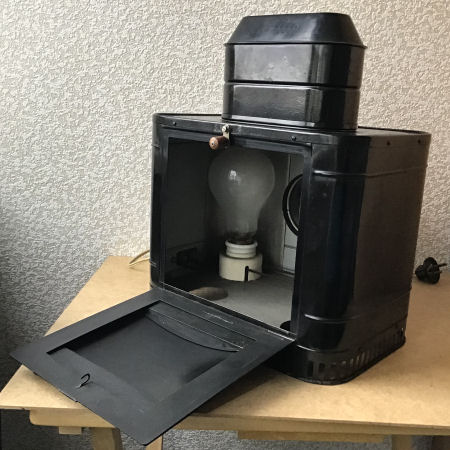 |
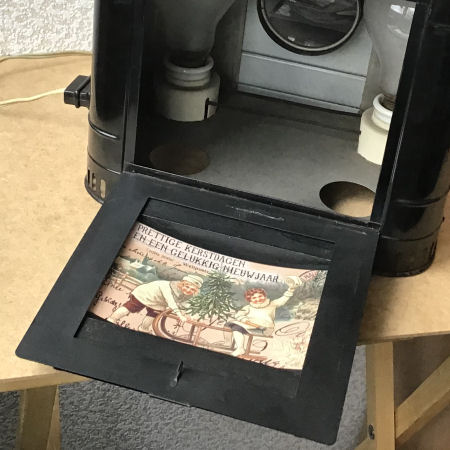 |
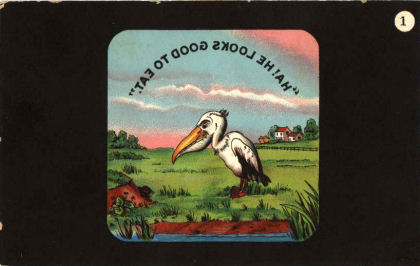 |
First card of a set of eight, telling the story of an odd pelican. Around 1900 Butcher & Sons released sets of 'Primus Projection Post Cards' for episcopic projection. The pictures on these cards are the same as used on the glass lantern slides of their famous Primus Junior Lecturer Series. The cards are reverse-printed as the image was reversed on projection. Size is 3 1/2" x 5 1/2" (9 x 14 cm). |
|
| |
| |
©1997-2023 'de Luikerwaal' All rights reserved. Last update: 13-11-2023. |
